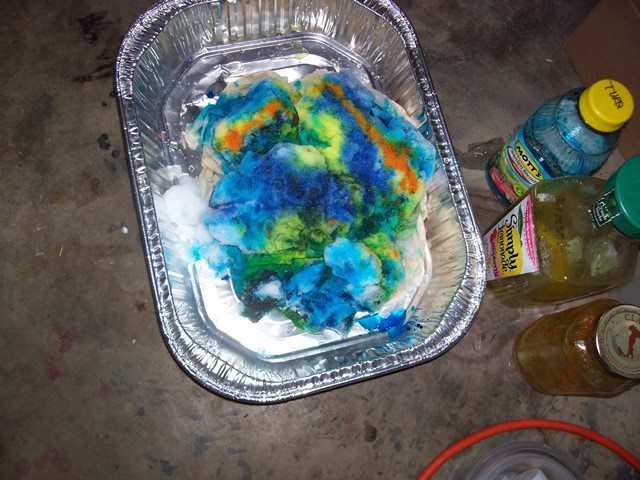I admit that I love to dye fabric. I would dye fabric all day long if I didn’t
have to go to my job Monday through Friday. I also admit
that it doesn’t always come out the way I had planned, hoped, or expected it
to! But I am learning a lot all the time
about dyes and the way they react with each other.
One of the first things I learned is that everyone dyes
their fabric in their own way, and most of those folks tend to think their way
is THE BEST. I don’t live near anyone else who dyes fabric,
so I had to learn from books—these are my favorites:
Book 1 – Dyeing to
Quilt by Joyce Mori - It’s absolutely fantastic for taking you through
dyeing color wheels using three primary colors.
Simple, clear instructions, just what a beginner needs! It’s out of print now but available used
on-line.
Book 2 –
Color Your
Cloth by Malka Dubrawsky - A great resource for a beginner—the directions
are very clear, and she also describes in great detail how to do batik and also
discharge. Great if you want to create
patterns on cloth, as well as try out some fun techniques.
Book 3 –
Fabric to
Dye For by Frieda Anderson - She uses some key colors to create her cloth,
and shows how to make gradients and other specialized fabrics.
So I tried dyeing and made some great fabrics that I was
happy with. Then I needed a specific
purple color, and couldn’t figure out how to get it. I signed up for an on-line dyeing course
taught by Candy Glendening at Candied Fabrics,
http://dyeing101.candiedfabrics.com/ where we learned to dye these “Tables” using
3 different primary colors and the low water immersion technique:
It was kind of tedious at times, measuring out tiny amounts
of dye through a syringe, and creating over 120 swatches. We did a warm color set and a cool color set,
and this class helped me SO much -- one of the things with dyeing is that there
are so many different dye colors, and it gets expensive trying to buy all of
them, so why not learn to mix your own colors, and technically you can dye any
color using a combination of Red, Yellow, Blue, and black.
I can definitely recommend this class to
anyone who wants more control over their dyeing results—and it wasn’t expensive,
especially when compared to attending a 3-5 day workshop in another state. A very economical choice, and great for
someone who hasn’t dyed before and wants to try it out, as well as someone who
has started to dye but isn’t always thrilled with the results.
When you get REALLY serious about dyeing fabric, the more you learn
makes you realize how much more there is to learn. Recently, I bought Ann Johnston’s DVDs
Color by Accident, a set has well over 4 hours of information on them, and it’s almost
like being at a workshop. The techniques are being covered during February over at
And Then We Set It On Fire, check them out!






















